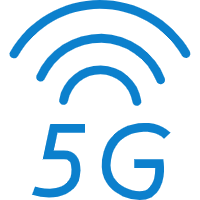EPCS16N Overview
The EPCS16N is a high-performance, reprogrammable Electrically Erasable Programmable Logic Device (EPLD) from the EPCS series, offering a unique solution for customizable logic circuits. Ideal for FPGA-based applications, the EPCS16N enables users to optimize their designs, reduce footprint, and enhance efficiency in a wide range of industrial and consumer applications.
Key Specifications
- Memory Size: 16 Mb (Megabits)
- Voltage Supply: 2.5V to 3.6V
- Programming Voltage: 3.0V
- Data Rate: High-speed interface with up to 133 MHz
- Dimensions: 10mm x 10mm (TQFP Package)
- Operating Temperature Range: -40°C to +85°C
- Power Consumption: Low standby current of 0.5 µA (typical)
- Interface: SPI (Serial Peripheral Interface) for easy integration
- Tolerances: ±10% on voltage supply
Unique Features and Benefits
- Small Footprint: The EPCS16N features a compact TQFP package, ideal for space-constrained applications, without compromising performance.
- High Efficiency: Operates with low power consumption, ensuring long-term reliability and reduced heat generation.
- Easily Reprogrammable: Users can reprogram the device multiple times, making it adaptable to design changes and ensuring flexibility throughout the product lifecycle.
- High-Speed Interface: The SPI interface provides fast, efficient data transfer, essential for real-time applications.
Benefits:
- Reduced System Costs: By integrating this device into your system, you can reduce component count and simplify design.
- Faster Time to Market: Reprogrammability speeds up prototyping and development processes.
- Reliability and Durability: Operates in harsh conditions (wide temperature range), making it suitable for industrial applications.
Practical Applications & Use Cases
- Consumer Electronics: Commonly used in devices requiring programmable logic for specific functions such as signal processing, control, and interfacing.
- Industrial Automation: The EPCS16N is an excellent choice for embedded systems, control circuits, and sensor interfacing in automation equipment.
- Automotive: Integrates well in automotive electronics for custom logic control, sensor processing, and communication modules.
- Telecommunications: Useful in communication equipment for signal routing, timing control, and protocol conversion.
Problem-Solving Scenarios:
- Design Flexibility: In prototyping and development, the need for adaptable logic is critical. The EPCS16N's reprogrammable nature allows quick iteration and fine-tuning of designs.
- Space-Constrained Systems: If your product requires a small form factor with high functionality, the EPCS16N’s compact size and versatility are ideal solutions.
Compatibility & Integration
- System Compatibility: The EPCS16N is fully compatible with a wide range of FPGA and microcontroller systems. It interfaces seamlessly with SPI-compatible devices for easy integration into existing designs.
- Installation: The device comes in a surface-mount TQFP package, ensuring ease of installation using standard PCB assembly techniques. No special tools are required, although a suitable SPI programming interface is necessary for initial configuration.
Frequently Asked Questions
What is the maximum operating voltage of the EPCS16N?
- The device operates within a supply voltage range of 2.5V to 3.6V, ensuring flexibility in various power environments.
Can the EPCS16N be used in outdoor applications?
- Yes, the device is rated for an operating temperature range of -40°C to +85°C, making it suitable for industrial and automotive environments.
Is the EPCS16N compatible with other Altera FPGAs?
- The EPCS16N is designed to work seamlessly with Altera (now Intel) FPGA systems that support SPI programming.
What tools are required to program the EPCS16N?
- You will need a compatible SPI programmer to load the logic configuration into the device. Software tools provided by Intel (formerly Altera) can facilitate programming and debugging.
Troubleshooting Tips
- Inconsistent Performance: Ensure that the supply voltage is within the recommended range (2.5V to 3.6V). A fluctuating or inadequate power supply may lead to inconsistent device behavior.
- Programming Issues: If the device fails to reprogram, check that the SPI interface is correctly connected and the programming voltage is within the specified range (3.0V).
Conclusion
The EPCS16N is a versatile and efficient programmable logic device that offers exceptional flexibility, small size, and high performance. Whether you're working on consumer electronics, industrial automation, or automotive systems, the EPCS16N’s reprogrammability, high-speed SPI interface, and low power consumption make it an invaluable component for a wide variety of applications.
EPCS16N Specifications
| Specification | Value |
|---|
| Memory Type | Flash |
| Memory Size | 128 Mbit |
| Operating Frequency | 40 MHz |
| Supply Voltage - Max | 3.6 V |
| Supply Voltage - Min | 2.7 V |
| Supply Current | 100 uA |
| Maximum Operating Temperature | + 85 C |
| Minimum Operating Temperature | - 40 C |
| Mounting Style | SMD/SMT |
| Package / Case | SOIC-16 |
| Packaging | Tube |
| Series | EPCS128 |
Application Field
-

Artificial Intelligence
-

5G Technology
-

Cloud Computing
-

Consumer Electronics
-

Wireless Technology
-

Industrial Control
-

Internet of Things
-

Medical Equipment




